Ballycuggaran
Houses within 10km of this house
Displaying 26 houses.
Houses within 10km of Ballycuggaran
Displaying 26 houses.
| House name | Description | |
|---|---|---|
| Woodpark (Woodpark Lodge) | Phillip Read was occupying Woodpark, parish of Inishcaltra, valued at £28, at the time of Griffiths Valuation. It was also recorded as his seat by Lewis in 1837. The OS Name Books record the existence of Woodpark House in Woodpark townland, "the residence of counsellor Reid". The house later passed by marriage to the Hibbert family. In 1894 Slater refers to it as the seat of Robert Fiennes Hibbert. In 1906 the house was valued at £69, the property of Flora J. Hibbert. It was destroyed by fire in June 1921. The site of this house is now located in county Clare. | |
| Ardcloony | A late 19th century house incorporating the earlier Bourchier home. Major General John Bourchier married Mary, daughter of Thomas Macnamara of Ardcloony in the mid 18th century and inherited the property. By the time of Griffith's Valuation the house belonged to Francis C. Fitzgerald who held the property in fee. It was valued at £20. Edmond Fitzgerald of Ardcloony owned 214 acres in county Clare in the 1870s. John Connell Fitzgerald was resident in 1906. A house is still extant at the site. | |
| Millbrook | A 19th century house occupied by the families that ran the mill. At the time of Griffith's Valuation the occupier was Peter Macmillan who held the property from Thomas Arthur. The buildings were valued at £40. A house is still extant in the area but on an adjacent site. | |
| Glenomera | Glenomera was the seat of the Arthur family from the mid 17th century until the early 20th century. In 1786, Wilson refers to Ballyquin as "the fine seat of Mr. Arthur". It is labelled Ballyquin House on the 1st edtion Ordnance Survey map but as Glenomera on the later 25-inch edition. Lewis wrote in 1837 that Glenomera was "celebrated as a shooting station for grouse and pheasant". It was held in fee by Thomas Arthur at the time of Griffith's Valuation and valued at £35. The house is now demolished. | |
| Clonboy | An 18th century house of the Brown family held from the Westropps in the mid 19th century. The Browns were agents for the estate of George Westropp. Occupied by John Brown in 1837 and at the time of Griffith's Valuation. Weir writes that the Browns continued to own Clonboy until the death of Ernest George Brown in 1942. The house was then demolished. | |
| Ross | Home of the Pearse family in the 18th century, in 1786, Wilson refers to the house as the seat of Mr. Pearce. Ross was occupied by John Blake in 1814. In 1822 a new house was built at a cost of £2,500 and was the residence of T. Westropp in 1837. Thomas Westropp was the fifth son of Ralph Westropp of Clonmoney and Attyflin. At the time of Griffith's Valuation Ross was the residence of John Digan who held the property from Anne Westropp [widow of Thomas]. Buildings valued at £23 and some untenanted land at Ross were the property of Ambrose Hall in 1906. It is still extant. |
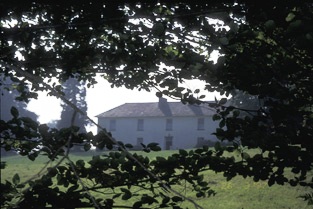
|
| Ballyvally | A house in the possession of the Parker family from the early 19th century, the Reverend Standish Grady Parker was resident in 1814. His brother William Parker was in residence from at least 1837, holding the property from members of the Law family. By the end of the 19th century Robert Gabbett Parker lived in the house, which is still extant. | |
| Kincora Lodge | A house on the outskirts of Killaloe, Weir writes that it was the home of an O'Brien family in the 1840s. Occupied by Captain Frederick Lowe, Royal Navy, at the time of Griffith's Valuation, who held it from Thomas Macnamara. Captain Lowe married Maria Christina, daughter of Henry Ross-Lewin of Ross Hill in 1847. In the 20th century the house belonged to the Butler-Stoneys for some time. | |
| Tinerana | The Purdon family, originally from Cumberland, held this property on the shore of Lough Derg from the mid 17th century. In the ownership of Simon George Purdon at the time of Griffith's Valuation when the buildings were valued at £30. The Irish Tourist Association Survey File of the 1940s states that the house was built "about 70 years ago", contains about 60 rooms and the original residence of the Purdons stands adjacent to the new house. The estate was sold to the Gleeson family who owned the Athlone Woollen Mills in 1901 and the house later became the property of Dr Carmody who opened a health centre. The property was offered for sale in 2012. |
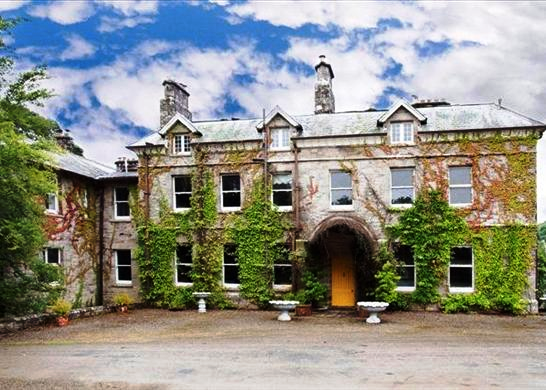
|
| Moynoe | In the early 18th century the Ringrose family lived at Moynoe. It is probable that Sir John Reade built the late 18th century house. He was the occupier in 1814 and Fitzgibbon Hinchy was living in the house in 1837. The house was unoccupied at the time of Griffith's Valuation, Thomas Wadson was the immediate lessor. The Sampson family lived in it for the remainder of the 19th century and well into the 20th century. Edward MacLysaght surveyed the papers of Miss Mary Sampson of Moynoe circa 1944. Bought by the present owners in the mid 20th century, the house was demolished in 1998. see http://www.esatclear.ie/~moynoe/Page_16x.htm/ |
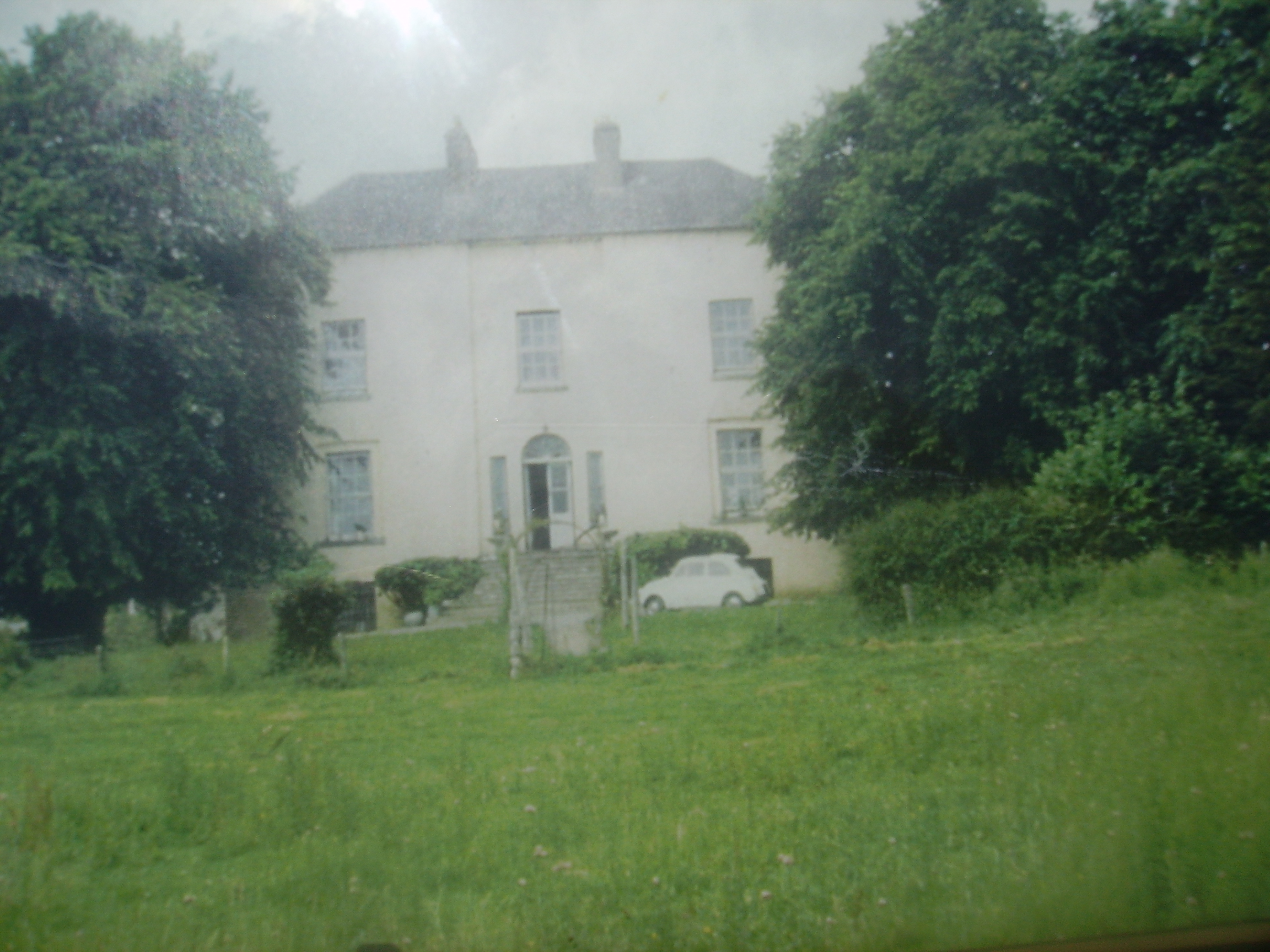
|
| Fort Edward | Built post the first Ordnance Survey probably by a member of the Westropp family. Occupied by Dr Patrick Cullinan at the time of Griffith's Valuation who held it from the Reverend John Gleeson. The house is still inhabited and well maintained. |
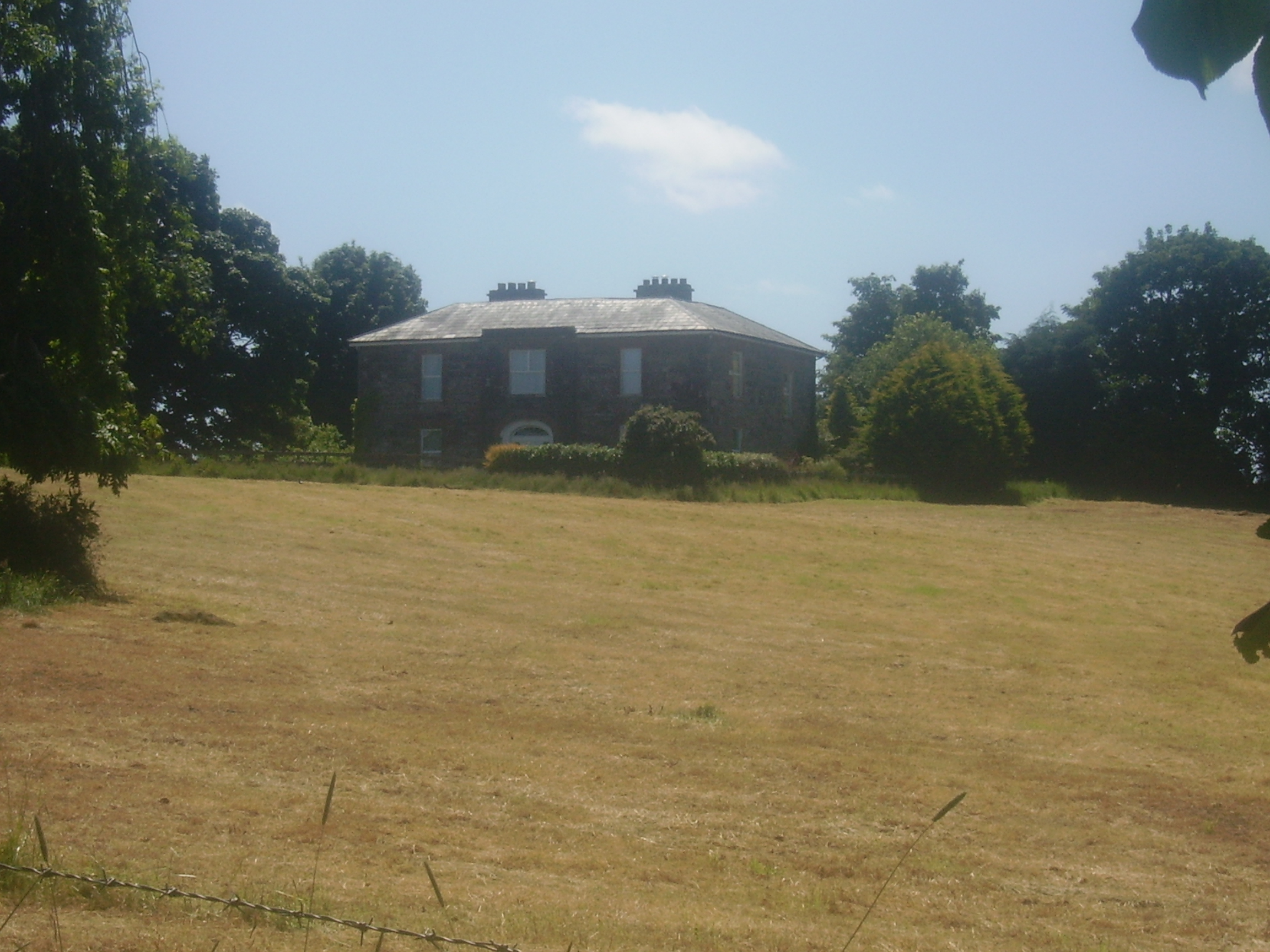
|
| Ballyvannan | The seat of Lord Dunboyne in 1837 and in the mid 19th century of James Crotty who held it from Lord Dunboyne when the buildings were valued at £3. The house is still occupied. | |
| Drewsborough | A home of the Drew family from the mid 18th century, occupied by Ringrose Drew in 1814 and by Francis Drew in 1837. Bought by Michael Skehan in the Encumbered Estates Court, he is recorded as being resident at the time of Griffith's Valuation, when the house was valued at over £22. Drewsborough, or Victoria Park as it was then known, was sold to William Scanlon in 1869. In 1899 it was bought by John O'Brien, grandfather of Edna O'Brien, the author. The original house was burnt in June 1921. A modern bungalow has been built on part of the site and the O'Brien home is closeby. Some farm buildings and an underground cellar still remain. |
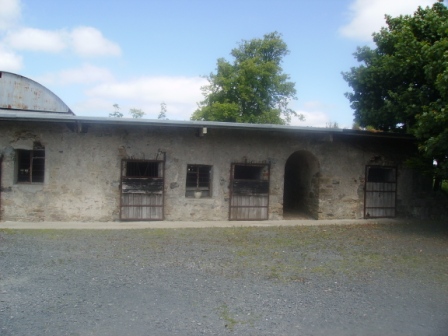
|
| Raheen | This was the home of the Brady family from the mid 18th century. In 1837 Reverend Thomas B. Brady occupied the house. By the time of Griffith's Valuation William Moreland was in possession and the house, offices and mill valued at £4.10 shillings were leased to Patrick Flynn. In 1906 buildings at Raheen ,which included a mansion house and 401 acres of untenanted land belonging to Robert W. Moreland, were valued at £37. In 1908 the property was bought by S.R. MacLysaght of Mallow, father of Dr Edward MacLysaght, genealogist. The Irish Tourist Association Survey file refers to Raheen Hospital beautifully situated amid a large forest on the shores of Lough Derg. The house no longer exists. | |
| Castlelough | A circa 1820s house attached to an earlier building on the shore of Lough Derg, Castlelough was the seat of the Parker family. In 1786 Wilson refers to Castlelough and Castletown as seats of the Parker family. Occupied by Anthony Parker in 1814 and in 1837 who was succeeded in that year by his brother the Reverend Standish Grady Parker. The representaives of the Reverend Standish occupied the house at the time of Griffith's Valuation when the buildings were valued at £51+ and held in fee. The Parkers were still resident at the end of the 19th century. This house is still in use as a country residence. |
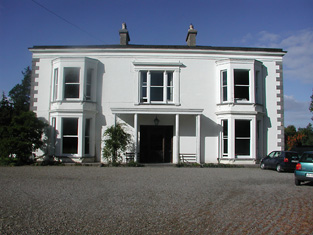
|
| Landsdown | In 1786 Wilson refers to "Land's-town" as the seat of Mr. Rolleston. The home of W. Parker in 1814 and of Mrs Parker in 1837. In 1840 the Ordnance Survey Name Books refer to "Landstown, a good dwelling house, the residence of William Parker". He was also the occupant in the mid 19th century when the house was valued at £55+ and held in fee. John Parker of Brookfield and Landsdown married Helena, daughter of George Washington Biggs of Bellevue. The Parkers were still resident in the 1870s. Bassett's Directory of 1889 refers to Charles E. Tuthill of Landsdown. In the 20th century the home of the White Spunner family. This house, built in 1779, was for sale in 1991 (see ''Country Life'' Volume 185). It is still extant. |
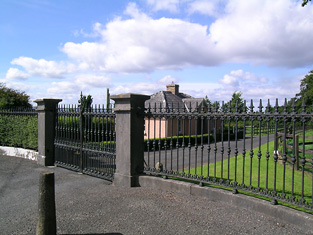
|
| Parteen Villa | Robert Atkins Twiss, second son of Robert Twiss of Cordell House, county Kerry, was living at Parteen Villa in 1837. In 1840 the Ordnance Survey Name Books refer to Parteen Villa as the residence of Thomas Mansell Bradshaw, "a neat house in the cottage [stile]". The house was occupied by the representative of Robert Twiss at the time of Griffith's Valuation, value at £29+ and held from Mrs Margaret Ormsby. Parteen is probably the house at Birdhill occupied by Robert G.E. Twiss in 1906 and valued at £30. A building is still located at this site. | |
| Birdhill | This house was originally the home of a branch of the Going family. Leet records Richard Going as the occupant in 1814. He was murdered in 1821. S. H. Atkins was resident in 1837. In 1840 the Ordnance Survvey Name Books note it as the seat of John Going and describe it as "a commodious dwelling house" with a demesne consisting of "plantation and ornamental ground". At the time of Griffith's Valuation, John Going was also the occupier when he held the house, valued at £40, with 51 acres and the national school, from Mrs Margaret Ormsby [nee Atkins]. She left Birdhill to her nephew George Twiss. Birdhill was burnt in the early 1920s and is now a ruin. | |
| Bushfield | In 1786, Wilson refers to Bushfield as the seat of Mr. Cashell. Francis W. Cashell was living at Bushfield, Nenagh, in 1814 and J. Philips in 1837. Henry Phillips was the occupant at the time of Griffith's Valuation when the house was valued at £14 and held from Henry Cashin [Cashel]. This house appears to be still extant. see http://humphrysfamilytree.com/Cashel/henry.bushfield.html | |
| Fort Henry | Fort Henry, overlooking the Shannon River, was the residence of Stephen Hastings in 1814 and of Finch White in 1837. Earlier, in 1786, Wilson had also noted it as a Hastings residence. At the time of Griffiths Valuation, Finch White held the house from Stephen H. Atkins. It was valued at £28.15s. Finch White was related to the Atkins through marriage with a member of the Gelston family. In 1906 this house was in the possession of Frederick C.Henry. In 1840, however, the Ordnance Survey Name Books had also noted that J.J. Henry was the proprietor. It is still extant. | |
| Gortna House | This house was located close to the shore of the River Shannon and is marked on the first edition Ordnance Survey map and the later 25 inch map as Gortna House. Lewis records H. Franks as resident at Shannon View in the parish of Templeachally. Henry Franks occupied a house valued at £12+ and held from Stephen H. Atkins at the time of Griffith's Valuation. Henry Franks was married to Elizabeth daughter of Ringrose Atkins. There are still buildings at this location. | |
| Birdhill (Kyle) | Christopher Kayes held a house and offices valued at £27.18 shillings with 231 acres from Mrs Margaret Ormsby in the townland of Birdhill at the time of Griffith's Valuation. These would appear to be located south west of Birdhill House and just east of Kyle burial ground. | |
| Derry Castle | In 1786, Wilson writes that Derry Castle was the seat of Michael Head. Lewis records Derry Castle as the seat of M.P. Head. In 1840 the Ordnance Survey Name Books describe the demesne at Derry as "chiefly composed of platation and ornamental ground. Derry House (a commodious building) is the residence of Michael Petty Head". By the time of Griffith's Valuation it was held by Francis Spaight in fee, the buildings were valued at £71. ''The Nenagh Guardian'' of 15 April 1872 report on a bad fire at Derry Castle. Spaight family members appear to be still resident in the early 20th century. The National Inventory of Architectural Heritage states that the castle is now demolished. |

|
| Mary Ville | This house is marked as Mary Ville on the first edition Ordnance Survey map. In 1840 the Ordnance Survey Name Books refer to it as "a respectable farmhouse and offices" the proprietor of which was Michael Head. This may be the house recorded by Lewis as Derry Ville inhabited by J. Salmon. At the time of Griffith's Valuation Mrs Mary Sparling was resident, holding the lodge valued at £13 from Francis Spaight. Buildings are still extant at this site. | |
| Ryninch | Lewis records J. O'Brien of Ryninch and Jeremiah O'Brien held a house valued at £10 and 115 acres from Francis Spaight in the mid 19th century. There were quarries in this townland. | |
| Lakeview | Henry D. Head occupied a house valued at £14+ in this townland in the mid 19th century. He held the property in fee. A house and large farmyard are now located at this site. |

